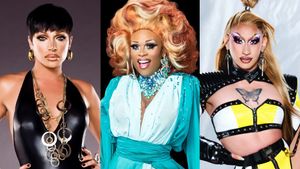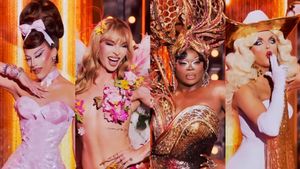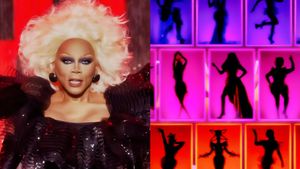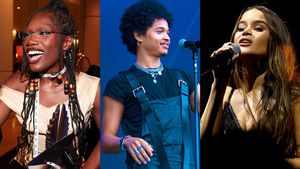With the barrage of sexual harassment and assault allegations that have surfaced since The New York Times exposed Harvey Weinstein as a serial sexual predator in early October, Google searches for the term "toxic masculinity" have spiked, and several recent online articles have invoked the term. There are those opinion and news pieces that acknowledge toxic masculinity as palpable, dangerous, and solvable like "Toxic Masculinity is Everywhere. It's Up to Us Men to Fix This" in The Guardian. And then there are articles that reject the notion of toxic masculinity by conflating it with all masculinity, like a piece Fox News ran titled "Matt Lauer Was Fired a Week Ago for Appalling Behavior, Not 'Toxic Masculinity."
Not entirely unlike wind, gravity, and love, toxic masculinity isn't something that can be held in your hands, turned over, and inspected. But despite its intangibility, we know it when we see it from its effects -- the lone gunman who massacred crowds of people at a concert in Las Vegas, the Orlando Pulse nightclub shooting (just about any mass shooting), Weinstein, James Toback, Kevin Spacey, and Brett Ratner, and the ubiquitous schoolyard bully who terrorizes the sensitive kid on the playground with taunts of "be a man."
But utter the phrase "toxic masculinity" in certain milieus and inevitably there will be some with a kneejerk #NotAllMen defense -- as if "toxic," which Merriam-Webster defines as "containing or being poisonous material especially when capable of causing death or serious debilitation," or "extremely harsh, malicious, or harmful," weren't modifying "masculinity."
Therein lies the problem with attempting to define the term with its hazy etymology, as swaths of those who hear it will decry "fake news" before they can use it in a sentence like, "Donald Trump's unfettered 'toxic masculinity' makes him think he can kiss and grab women 'by the pussy' without consent."
"Every time feminists talk about toxic masculinity, there is a chorus of whiny dudes who will immediately assume -- or pretend to assume -- that feminists are condemning all masculinity, even though the modifier 'toxic' inherently suggests that there are forms of masculinity that are not toxic," feminism, politics, and culture writer Amanda Marcotte asserted in "Overcompensation Nation: It's Time to Admit That Toxic Masculinity Drives Gun Violence," a response piece to the Orlando massacre that ran on Salon.
To be clear, "toxic" is the modifier, so the term "toxic masculinity" in no way implicates all men or even all masculine people as abusers, harassers, or terrorizers. But because "masculinity" as defined by Merriam-Webster means "having qualities appropriate to or usually associated with a man," has become mutable and difficult to pin down, especially with evolving studies of gender as a construct, it is useful to look at how "toxic masculinity has historically been defined."
The etymology of the term can be traced not to academia, but to the rise of the Mythopoetic men's movement of the '80s and '90s -- a response to the cultural shift second-wave feminism brought about -- where men bonded often in the wilderness and in sweat lodges to attempt to rediscover their "deep masculinity." The movement was bolstered in large part by Robert Bly's book Iron John," in which he asserted that the feminist movement caused men to examine their feminine sides to the detriment of their male rituals, according to writer and feminist Erin Innes.
"The male in the past twenty years has become more thoughtful, more gentle. But by this process he has not become more free," Bly wrote in the introduction to his deeply heteronormative book Iron John, which fails to consider any worldview other than that of mostly middle-class, straight, cisgender white men.
Shepherd Bliss, another figure in the Mythopoetic men's movement, is credited with having coined the phrase "toxic masculinity," asserting that it was the result of modern culture repressing "deep masculinity." And unlike its current use, toxic masculinity, created in 1993 in response to feminism, was primarily concerned with its effects on toxically masculine men.
Mythopoetic figure Frank Pittman further investigated the term in the early '90s and came to the conclusion that toxic masculinity resulted from women raising boys without the presence of male role models, thereby blaming women for its existence. But his blame-throwing at women didn't stop there. He wrote:
"Why do men love their masculinity so much? Because men have been taught to sacrifice their lives for their masculinity, and men always know that they are far less masculine than they should be. Women, though, have the power to give a man his masculinity or take it away, so women become both terrifyingly important and terrifyingly dangerous to men."
So, ironically, the men who willed the term toxic masculinity into existence, exhibited signs of it as they censured women for it. Pittman, who was deeply concerned about the deleterious effects of toxic masculinity on men, wrote that men live seven years less than women, suffer higher rates of suicide, homicide, lung cancer, cirrhosis of the liver, and other illnesses, which is all true. But he and the other Mythopoetics failed to truly investigate its effects on those impacted by toxically masculine people.
All of that brings us to more recent attempts to define the term. Marcotte, writing for Salon:
"Toxic masculinity is a specific model of manhood, geared toward dominance and control. It's a manhood that views women and LGBT people as inferior, sees sex as an act, not of affection but domination, and which valorizes violence as the way to prove one's self to the world. Toxic masculinity aspires to toughness but is, in fact, an ideology of living in fear: The fear of ever seeming soft, tender, weak, or somehow less than manly. This insecurity is perhaps the most stalwart defining feature of toxic masculinity."
If it weren't enough that Marcotte delivered such a pithy, all-encompassing definition, she also offered current examples:
"Donald Trump flipping out when someone teases him about his small fingers. (Or about anything, really.) The ludicrously long and shaggy beards on 'Duck Dynasty,' meant to stave off any association with the dreaded feminine with a thicket of hair. The emergence of the term 'cuckservative,' flung around by hardline right-wingers to suggest that insufficient racism is somehow emasculating. Conservatives absolutely melting down about an Obamacare ad that suggested that, gasp, sometimes men wear pajamas."
Not every example of toxic masculinity is as obvious or extreme as the standard bearers of it like serial predators like Roy Moore and Trump or the white nationalists carrying tiki torches and angrily shouting racist epithets in Charlottesville. Toxic masculinity abounds to such a degree that the terms "manspreading" and "mansplaining" aren't just a part of the vernacular, but fairly acknowledged as universal experiences for those who've encountered such behavior. And, of course, while not all men who "spread" or "splain" are toxic, the solipsism that requires one to take up more space than needed in public or to condescend and exhibit gendered know-it-all behavior, when unchecked, can lead to toxic masculinity.
Google "traits of masculinity" and it's not easy to find examples or definitions that haven't been co-opted by modern men's rights movements that seek to ostensibly "make a man" of all who click those links. Even the results of a study by researcher Y. Joel Wong and his colleagues published in 2016, which found that sexism is bad for men's health, identified 11 typically masculine traits that are harmful to men's mental health, but the study made no distinction between masculinity and toxic masculinity. Those traits included "desire to win," "need for emotional control," "risk-taking," "violence," "power over women," "disdain for homosexuality," and other none-too-favorable markers.
While it's dismaying that finding positive definitions or defining traits of masculinity is difficult, the same can be said when one Googles "traits of femininity." Searches for that term yield a few feel-good women's empowerment articles and plenty of "how to please your man" pieces.
One of the clearest, most concise breakdowns of masculine (and feminine) traits exists in a section on Planned Parenthood's site that skillfully addresses gender stereotypes, even going so far as to define hyperfemininity and hypermasculinity and offering examples of what to do when one encounters gender stereotyping.
"Extreme gender stereotypes are harmful because they don't allow people to fully express themselves and their emotions," according to Planned Parenthood's website. "For example, it's harmful to masculine folks to feel that they're not allowed to cry or express sensitive emotions. And it's harmful to feminine folks to feel that they're not allowed to be independent, smart or assertive. Breaking down gender stereotypes allows everyone to be their best selves."
Shifting attitudes about the nature of gender and a move away from a binary conception of it and from gender stereotypes typified by Mad Men-era toxicity appear to be the way forward, away from toxic masculinity and the societal pressures that inspire some men to prove their manliness by acting out in ever-increasingly violent, oppressive, racist, misogynistic, homophobic, and transphobic ways.




















































































